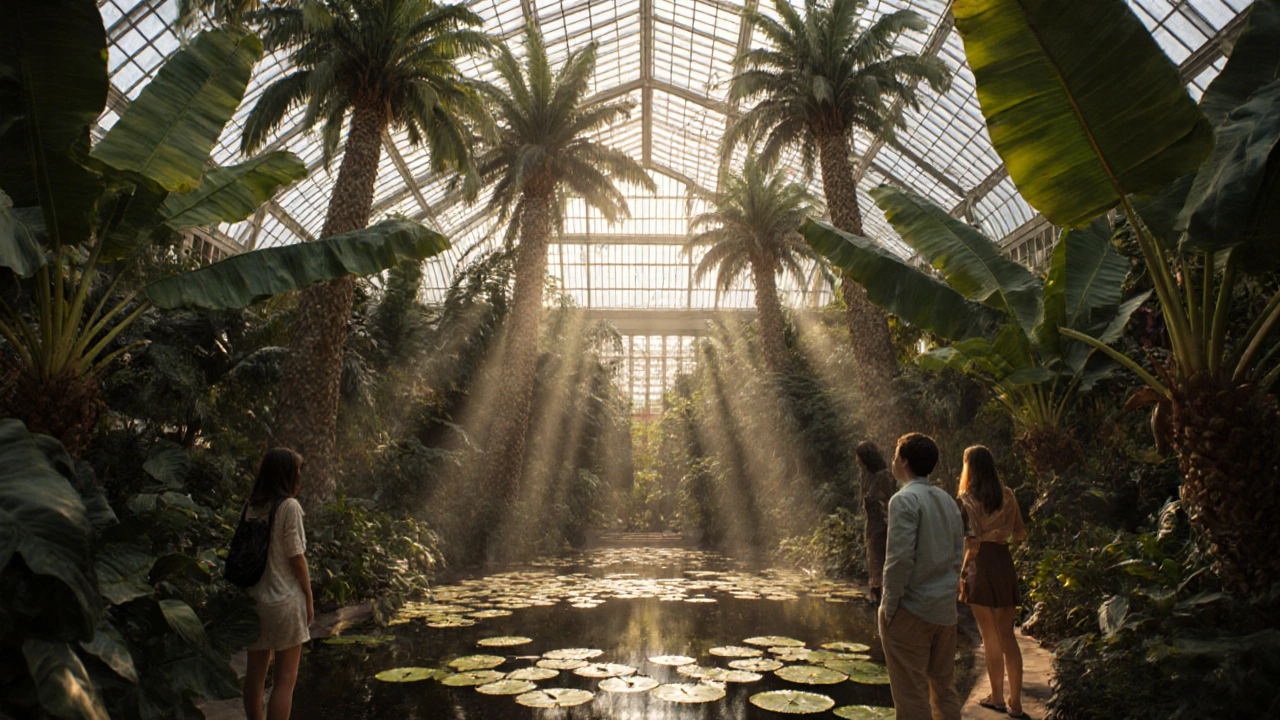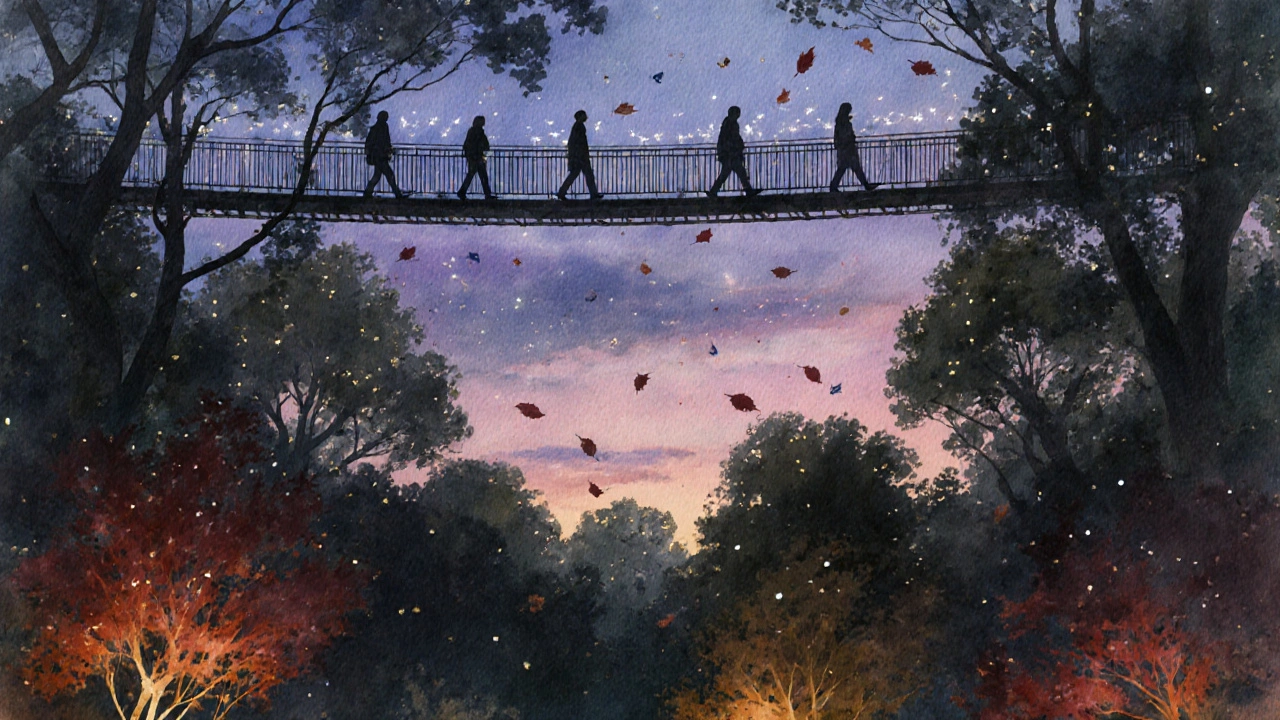
Walking through Kew Gardens feels like stepping into a living museum where nature and science hold hands. It’s not just a pretty park with flowers-it’s the world’s largest collection of living plants, cared for by scientists, preserved for future generations, and open to anyone who wants to see what the planet really looks like when left to thrive. Over 50,000 different plant species call this 300-acre site home. That’s more than the entire number of plant species found in all of North America combined. And you don’t need a degree in botany to appreciate it.
What Makes Kew Gardens Different from Other Parks?
Most city parks are designed for walking, picnics, or playgrounds. Kew Gardens was built to study, protect, and display plant life from every corner of the Earth. It started in 1759 as a private royal garden for Princess Augusta, but over 250 years, it became a global hub for plant science. The Royal Botanic Gardens, Kew, is a UNESCO World Heritage Site-not because it’s pretty, but because it’s scientifically vital. It’s where new medicines are discovered, endangered plants are saved from extinction, and climate change impacts are tracked through decades of plant growth records.
There’s no other place like it. You won’t find a single rose garden here labeled as the "best in the UK." Instead, you’ll find the Temperate House-the largest surviving Victorian glasshouse in the world-holding over 10,000 plants from places like South Africa, Australia, and the Andes. Or the Palm House, where humidity clings to your skin and banana trees grow taller than the roof. These aren’t decorations. They’re living research labs.
Must-See Spots in Kew Gardens
If you only have a few hours, focus on these five spots:
- The Palm House: Step inside and feel the tropical air. It’s not just for show-it’s home to rare orchids, cacao trees (the source of chocolate), and giant water lilies that can hold a child’s weight.
- The Temperate House: This iron-and-glass cathedral holds plants that survive cold winters, like the giant redwoods from California and the endangered Chilean wine palm.
- The Treetop Walkway: A 18-meter-high steel bridge that lets you walk above the canopy. From here, you see the garden from the birds’ perspective-no fences, no crowds, just leaves and sky.
- The Japanese Garden: Designed by a Kyoto-based landscape architect, this isn’t just pretty. It’s a meditation in balance. Every stone, pond, and pine tree was placed to reflect harmony, not decoration.
- The Arboretum: Over 14,000 trees, many over 200 years old. The giant sequoia near the lake is older than the United States. You can touch its bark and know you’re standing next to something that saw the American Revolution.
Don’t miss the Queen Charlotte’s Cottage, a rustic 18th-century retreat where royal children once played among strawberries and hens. It’s been restored to its original state, complete with period furniture and hand-painted walls. It’s a quiet reminder that even royalty once sought peace in gardens.
How to Plan Your Visit
Kew Gardens opens daily at 10 a.m. and closes between 4 p.m. and 6 p.m., depending on the season. The best time to go is midweek in April or May, when the tulips are in full bloom and the crowds are thin. Weekends and school holidays get packed-especially during the annual Lightopia winter light display.
Tickets cost £19.50 for adults and £9.75 for children under 16. You can buy them online in advance-this saves time and guarantees entry. On-site ticket queues can stretch over 45 minutes in peak season. Members of the Royal Botanic Gardens get free entry year-round, and there are discounts for seniors, students, and disabled visitors.
Getting there is easy. Take the District Line to Kew Gardens station-it’s a five-minute walk from the main gate. If you’re driving, parking costs £5.50 per day, but spaces fill up fast. The park is also a 20-minute walk from Richmond Station, which connects to central London in under 30 minutes.

What You Can’t Miss: The Science Behind the Beauty
Behind every path and glasshouse is real science. Kew’s Millennium Seed Bank stores over 2.4 billion seeds from 40,000 plant species-the largest wild plant seed collection on Earth. These aren’t just for display. They’re insurance policies against extinction. When a species vanishes in the wild, Kew’s seeds can bring it back.
The garden also runs the Plant Identification Service, where anyone can send in a sample and get it analyzed for free. Farmers, researchers, and even curious visitors have sent in strange leaves, fungi, and flowers. One man sent in a plant he found in his backyard-it turned out to be a rare European orchid thought to be extinct in Britain.
Every year, Kew scientists discover 20 to 30 new plant species. Last year, it was a tiny succulent from Madagascar that could store water like a sponge. It’s now being studied for drought-resistant crops. This isn’t just gardening. It’s planetary survival.
Family-Friendly and Accessible
Families love Kew because it’s not just about looking. There are hands-on experiences. The Children’s Garden has mud kitchens, bug hotels, and a giant wooden treehouse where kids can climb and pretend to be explorers. The Discovery Trail is a free, self-guided activity pack with puzzles and facts-perfect for ages 6 to 12.
Accessibility is built in. Wheelchair users can access nearly every path. Electric scooters are available to rent for £15 per day. Audio guides are free and available in seven languages. Braille maps and tactile plant models help visually impaired visitors experience textures and shapes. Even the café has a menu with large print.

Seasonal Highlights and Events
Each season brings something new:
- Spring: Daffodils, cherry blossoms, and the famous Spring Flower Show with over 100,000 blooms.
- Summer: Rose gardens explode in color. The Butterfly Paradise opens, letting you walk among live butterflies from Central America.
- Autumn: The maples turn fiery red and gold. The Autumn Colour Trail highlights the best trees.
- Winter: Lightopia turns the garden into a glowing wonderland with over a million LED lights. It’s not a Christmas market-it’s an art installation powered by solar energy.
Events like Plant Science Week and Botany for Beginners workshops are free with admission. You can sit in on a live plant dissection or talk to a scientist who just returned from the Amazon.
Why Kew Gardens Matters More Than Ever
Climate change is turning forests into dust. Coral reefs are dying. Insects are vanishing. Kew Gardens isn’t just a tourist spot-it’s one of the last places on Earth where we’re actively trying to reverse the damage. The garden has helped reintroduce over 20 plant species back into the wild. It’s training botanists from Africa, Asia, and South America to protect their own native plants.
When you walk through Kew, you’re not just seeing plants. You’re seeing the future. The orchid you photograph might hold the cure for a disease. The tree you touch might be one of the last of its kind. The seed you learn about could grow into food for a starving region.
This isn’t a garden you visit once and forget. It’s a place that changes how you see the world.
How long should I spend at Kew Gardens?
Most visitors spend between 3 and 5 hours. If you want to see everything-glasshouses, trails, exhibitions, and the seed bank visitor center-plan for a full day. If you’re short on time, focus on the Palm House, Temperate House, and Treetop Walkway. That’s the core experience in under two hours.
Can I bring food and drinks into Kew Gardens?
Yes. You’re welcome to bring your own picnic. There are plenty of grassy spots near the lake and under the trees. There are also five cafés and two restaurants on-site, serving everything from sandwiches to vegan curries. Alcohol is not allowed unless purchased on-site.
Are dogs allowed in Kew Gardens?
Only registered guide and assistance dogs are permitted. Regular pets are not allowed, even on a leash. This is to protect the plants and wildlife. There are dog-friendly parks nearby, like Richmond Park, just a 10-minute bus ride away.
Is Kew Gardens open all year?
Yes, Kew Gardens is open every day except Christmas Day. Opening hours change with the seasons: 10 a.m. to 6 p.m. in summer, 10 a.m. to 4 p.m. in winter. Always check the official website before you go, as special events or weather can cause temporary closures.
What’s the best way to get to Kew Gardens from central London?
The easiest way is by London Underground. Take the District Line to Kew Gardens station-it’s a direct 25-minute ride from Westminster. If you prefer trains, Richmond Station is a 20-minute walk away. Buses 65, 33, and 493 also stop at the main entrance. Parking is available but limited and costs £5.50 per day.
What to Do After Your Visit
Once you leave Kew, you’ll see plants differently. That weed in your yard? It might be a medicinal herb. That tree on your street? It could be a relative of one saved in Kew’s seed bank. Consider supporting them-become a member, donate to the seed bank, or just share what you learned. The garden doesn’t just survive on ticket sales. It survives because people care.
Kew Gardens isn’t just a place you visit. It’s a living archive of Earth’s green heart-and you just got to see it up close.